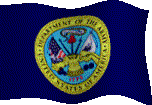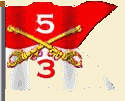Charlie Horse History Forward
Personal Recollections of LT Bill Alf:
I had been the ARP Leader since Dec 1970 when I transferred in from the 4th Inf Div. I was nearing the end of my tour ~ DEROS in Sep 1971. SSG Wright, SP4 Holian, SP4 Strickland, and PFC McCoy were the ARPs on that Huey. I knew them all very well. Perhaps I can provide a little more information about how we operated in those days. While the Authorized Strength of the Platoon was something near the 40 range, realistically unless we were doing a full platoon operation ~ we could field about 15 combat ready soldiers. Don’t forget we had R&Rs, other duty, sick call, etc. that reduced the ranks. Now we routinely provided three 5-man Squads every day the Troop was on Recon. We had an E-7 PSG for awhile after I got there, but mostly I had E-6 SSGs. These were good NCOs. Several were on their second tours in Vietnam as Infantryman. SSG Wright was a first tour man but he was a good squad leader in every sense of the word. I rode with the airborne Squad often. I can honestly say all our people were well trained in the air cavalry business. They knew what their duties were when put on the ground. They worked well as a small team, fired their weapons, rescued guys, provided 1st aid, and put bodies in bags ~ all in a day’s work. They weren’t perfect; but I am proud to say they were professional Infantrymen. We were as professional as the aircrews and the maintenance guys in my opinion.
For the record, I remember very few occasions when the Huey crews did NOT have a door-gunner. I don’t know any reason why there wasn’t a gunner on that Huey on the 12th. It certainly was the exception to the rule in my mind. Second, I don’t recall that ARPs served as temporary door-gunners. Now it may have happened, but it was, again, the exception to the rule. Finally, our SOP was a 5-man Squad on the chase Huey whenever there was a Recon mission. I don’t recall why there were only four on the 12th; that wasn’t normal at all. I hope it is not lost on the reader – there could have been nine KIAs that day versus the seven!
On learning of the loss the Troop was scrambled off of Quang Tri and directed to stage at Dong Ha and to prepare for an air assault onto the wreck site. The Command Group at the 1/5th Mech TOC refused to authorize the assault due to the proximity to the DMZ and the danger of capture by the numerous NVA forces in the immediate area. The orders came from BG Hill, “No American Forces on the ground for this recovery”. Charlie Horse Operations managed to coordinate with the American advisor to a ARVN Ground Cavalry unit operating in the area nearby to assist with the recovery. With Charlie Horse COBRAs covering the effort and Lt Roth flying at extremely low level, spotting remains for the very reluctant ARVN CAV unit, the extremely hazardous recovery of the remains was facilitated as best that could be managed.
The list of the KIA from that shoot-down was WO Lawrence Kelly the UH-1 AC, LT John Thompson, SSG James Wright, SPC4 Gary Holian, SPC4 Eric Kelly, SPC4 Larry McCoy, and SPC4 Gail Strickland.
During Aug 1971, the Troop started transiting to the OH18 6A LOH from the OH-58A aircraft.
25 Aug 1971
With the assault on Fuller and then the retaking of the FSB, activity north of the FSB, the Cam Lo area and north to the area around Con Thien was seeing a large increase in NVA activity with numerous rocket attacks on all the friendly compounds. Since May when the 30 GIs were killed on C-2, the 1/5th had directed more frequent VRs to destroy the numerous rocket caches and eliminate the NVA crews. The intensity of ground fire from individual and crew served anti-aircraft weapons made any mission there extremely hazardous.
Charlie Horse Scout WO Bill Halevy as part of a Heavy Team was conducting a Recon while keeping up a decent ground speed as the area was infested with NVA and 51 emplacements. Even with the increased speed, his OH-6 was the target of intense 51 fire. He made a controlled crash after a forced auto-rotation to a creek bottom. All three crewmembers evacuated the LOH and scrambled for high ground to help in a rescue attempt. There were an estimated fifty NVA soldiers in the near vicinity. They soon became engaged in a ground pursuit to kill or capture the three Americans. Surprisingly, the foliage and small trees north of the FSB were tall and dense enough that an extract by the team’s Huey was deemed impossible. On the ground, the three crewmen were doing their best to stay ahead of the pursuit and the whistles of the NVA.
Air Force assets were being brought to bear with F-4 Phantom jets putting in air-strikes along with all the Troop’s Cobras giving covering fire. There was an Air Force KC-135 Fuel Tanker on station and even a B-52 strike was diverted to the area. The fast movers were engaging ground targets at the direction of the Cobras and “Barky” FAC on station. Near misses were so close that one of the CE later remarked that he’d, “never seen the wheel well of an F-4 before.”
It was clear that the only method for extraction was going to be done with another LOH. The Scout Platoon Leader, CPT Joe Laster, stripped a LOH of any additional weight and flying through intense ground fire made the successful extraction.
With the extract complete, the B-52 strike went in along with all the assets on station from the Air Force.
27 Aug 1971
The 1/5th officially departed Vietnam. Charlie Horse continued to be part of the 3/5th Cav which was based bear Dong Ha and now attached to the 101st Abn Div. While the Quang Tri Combat Base got “a lot quieter,” the Troop was still based there.

.gif)


